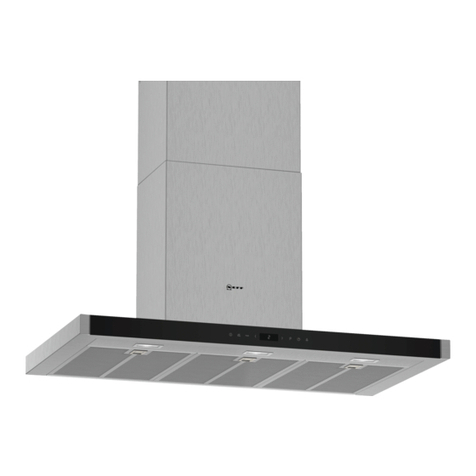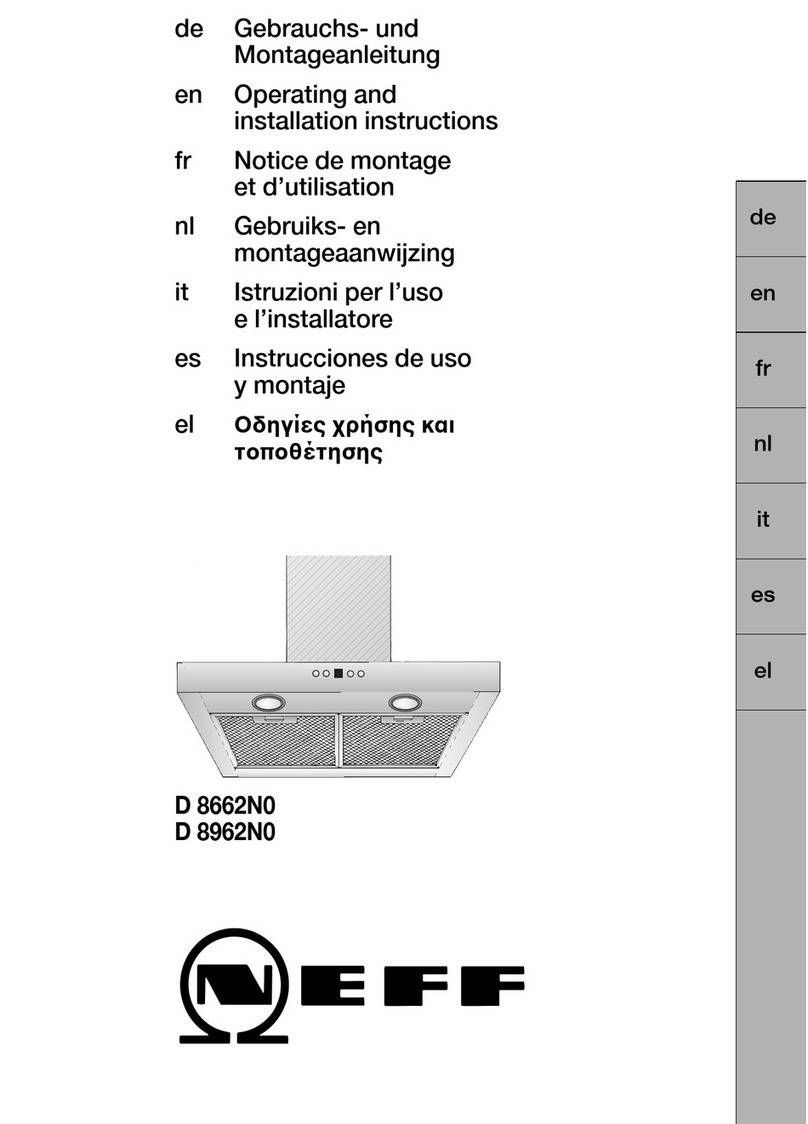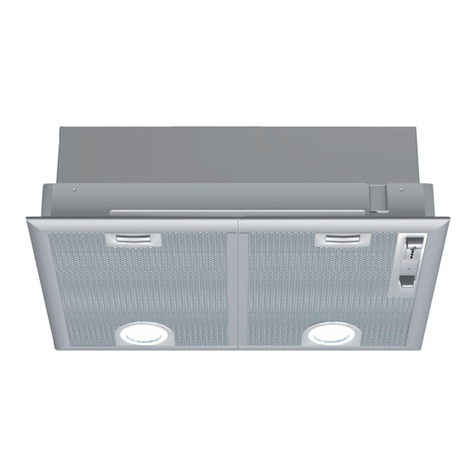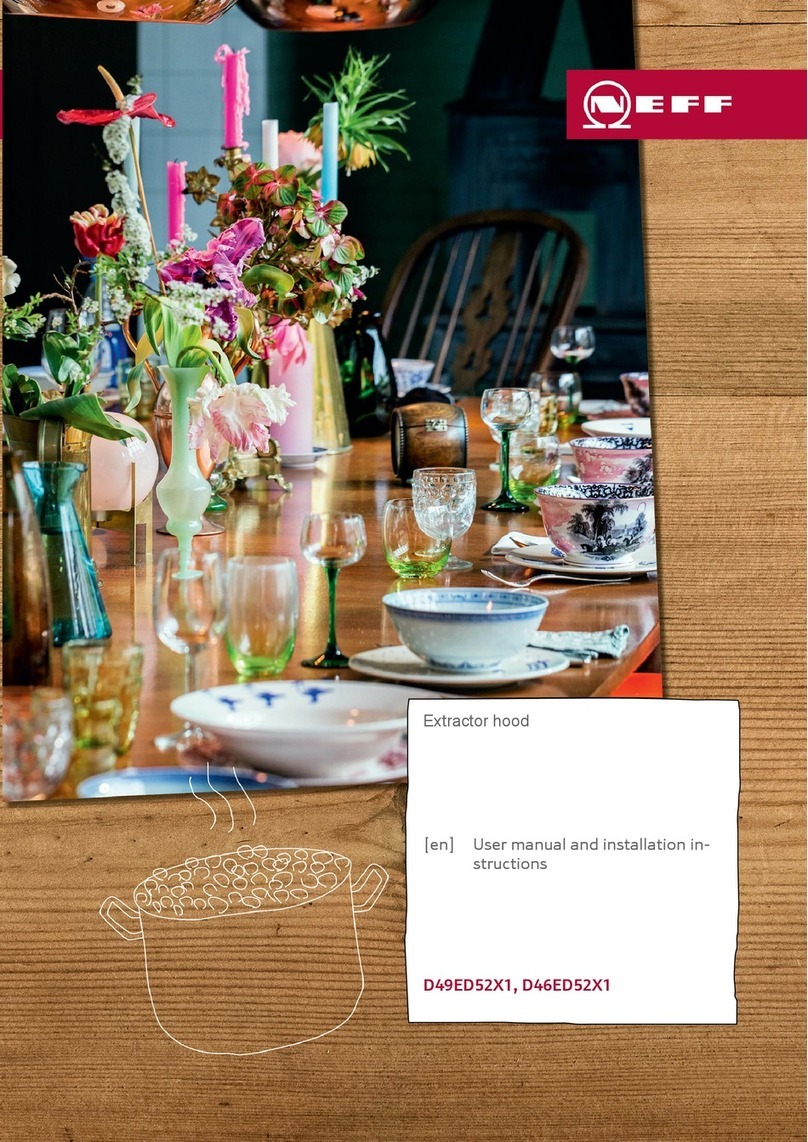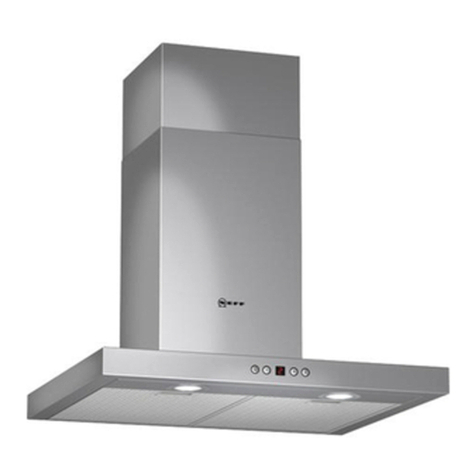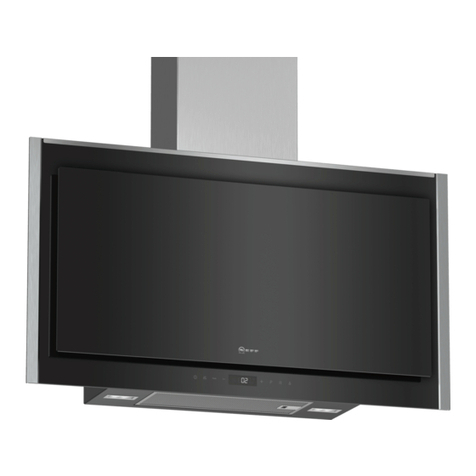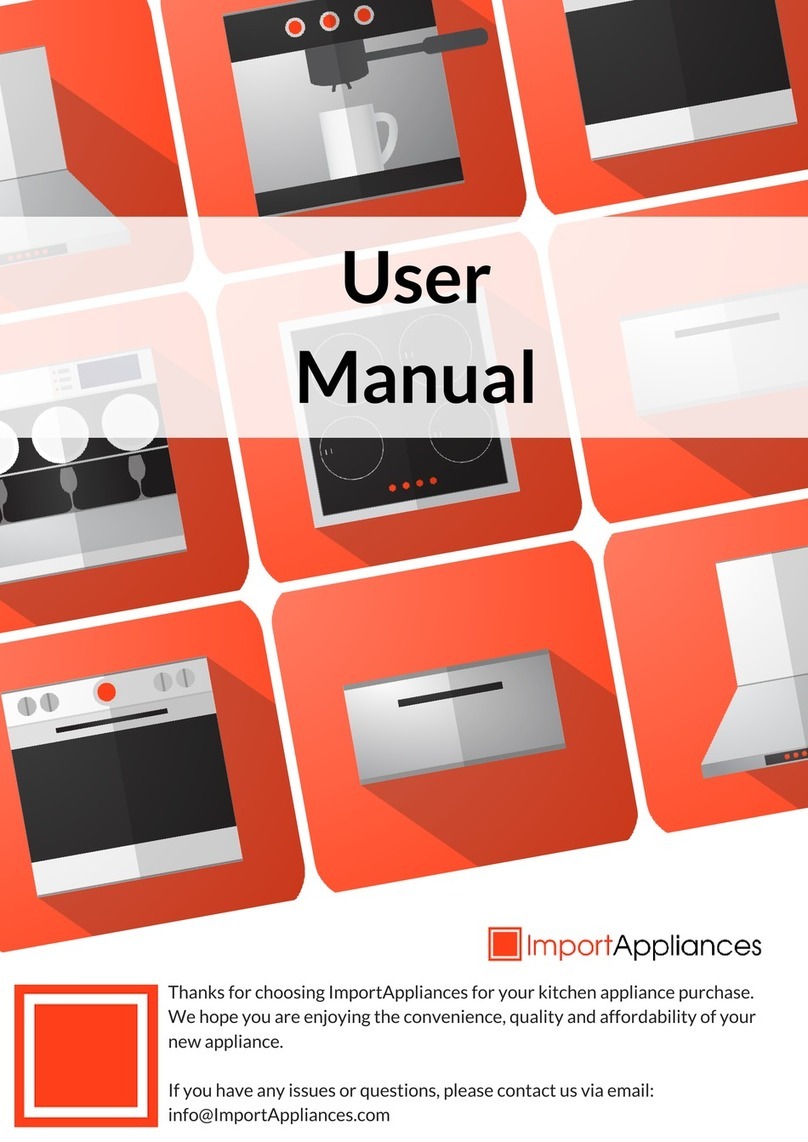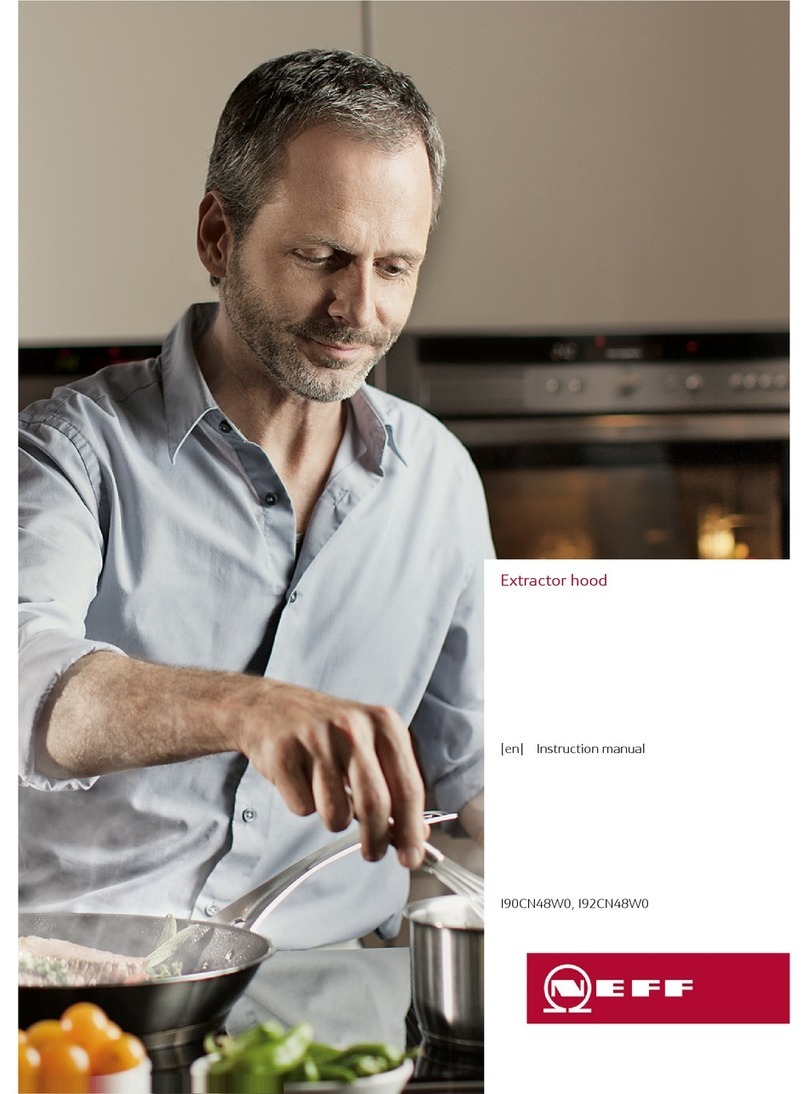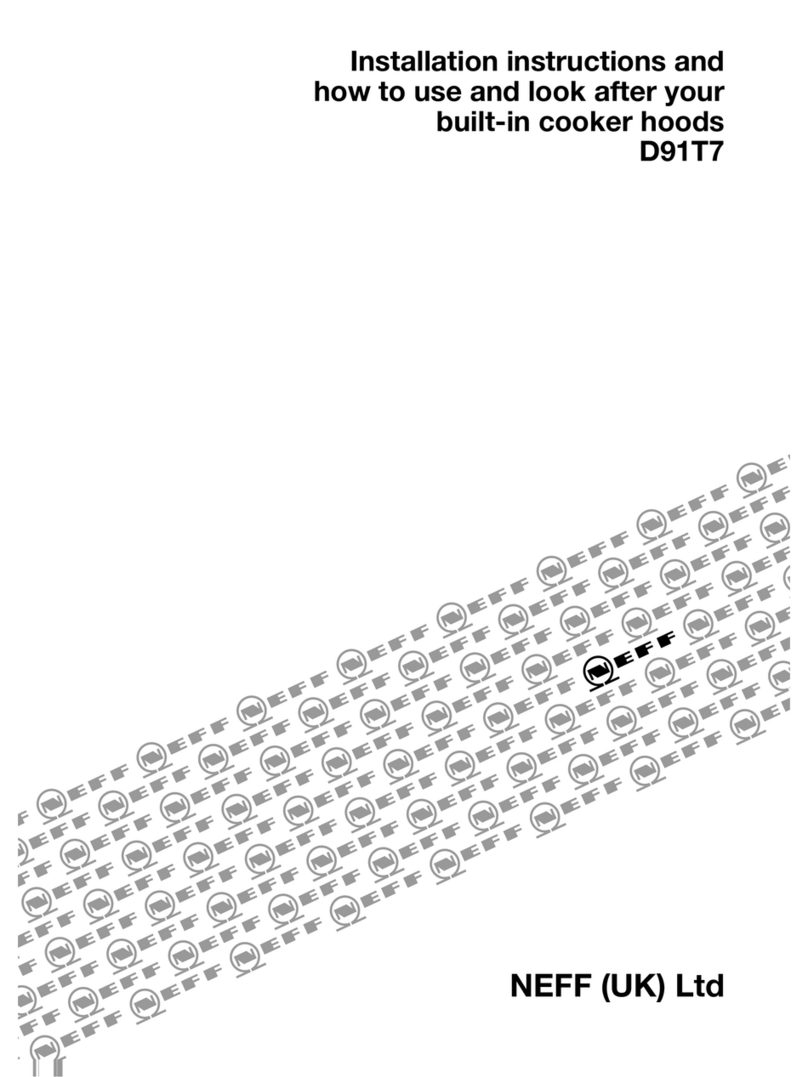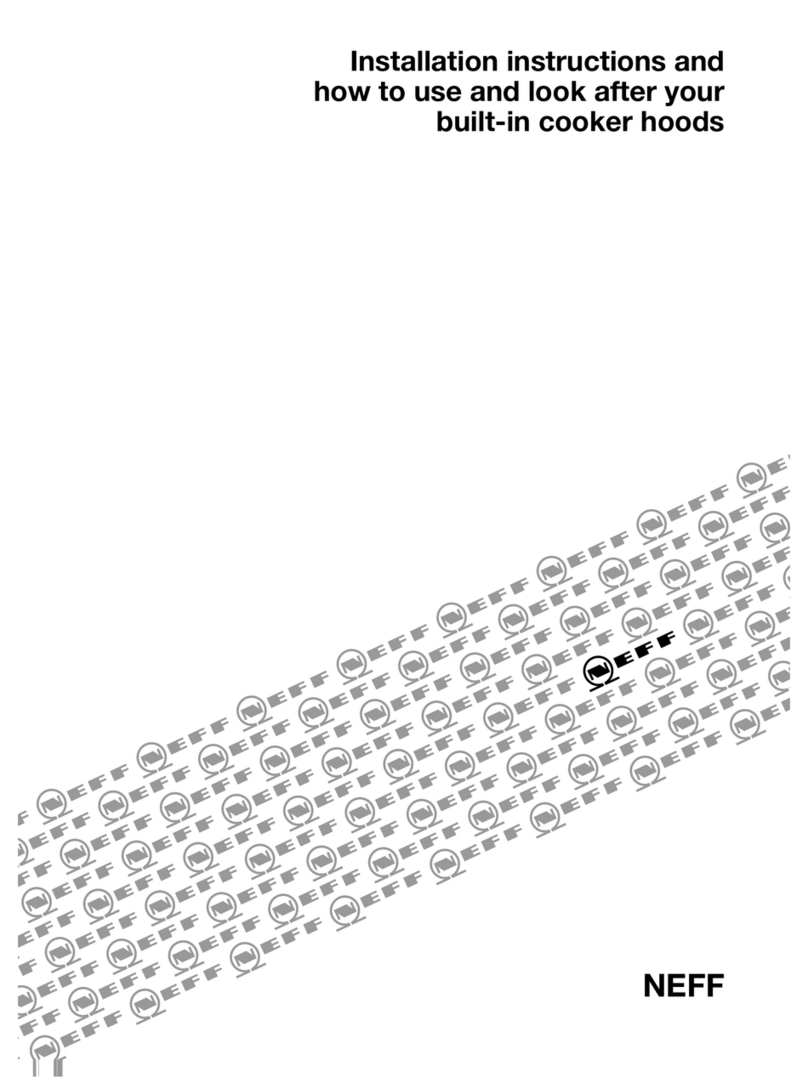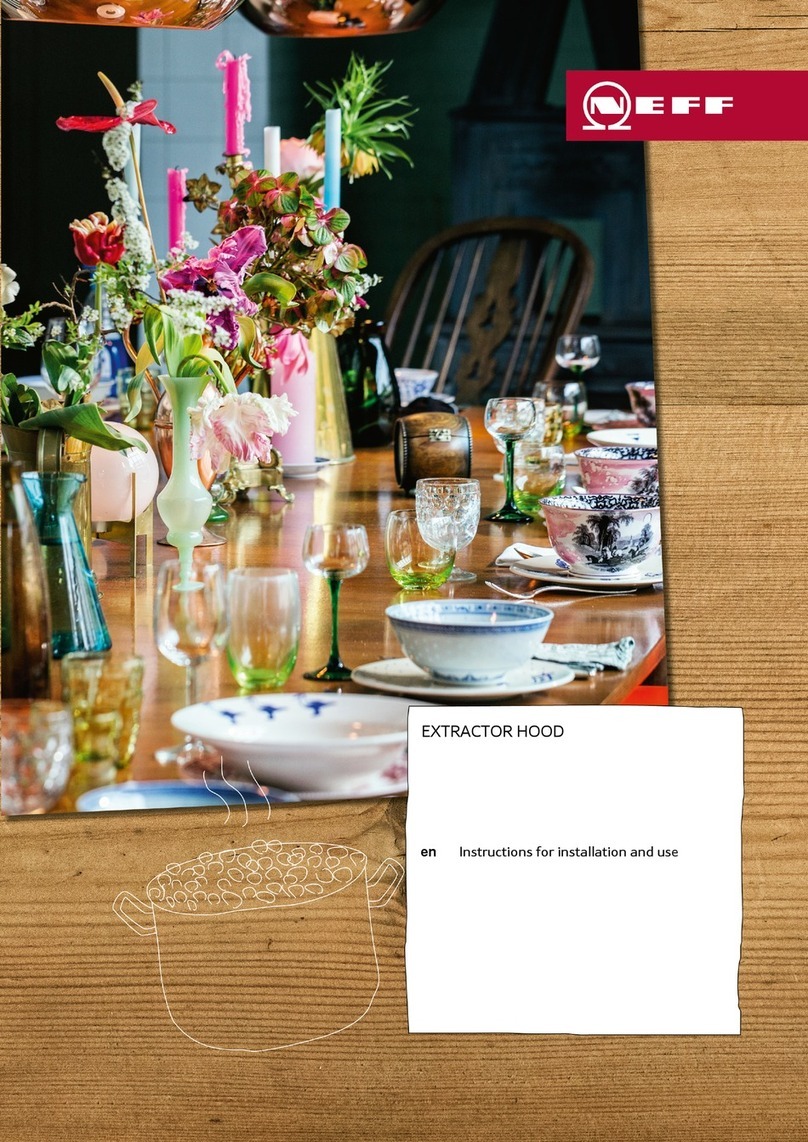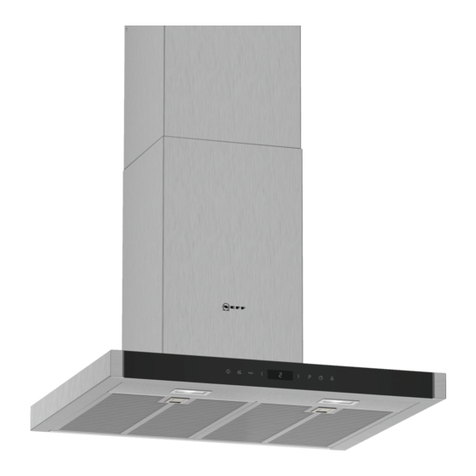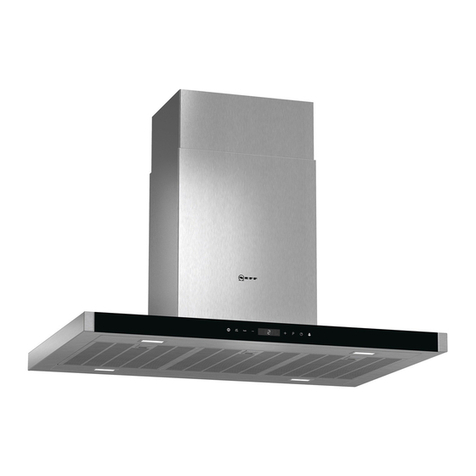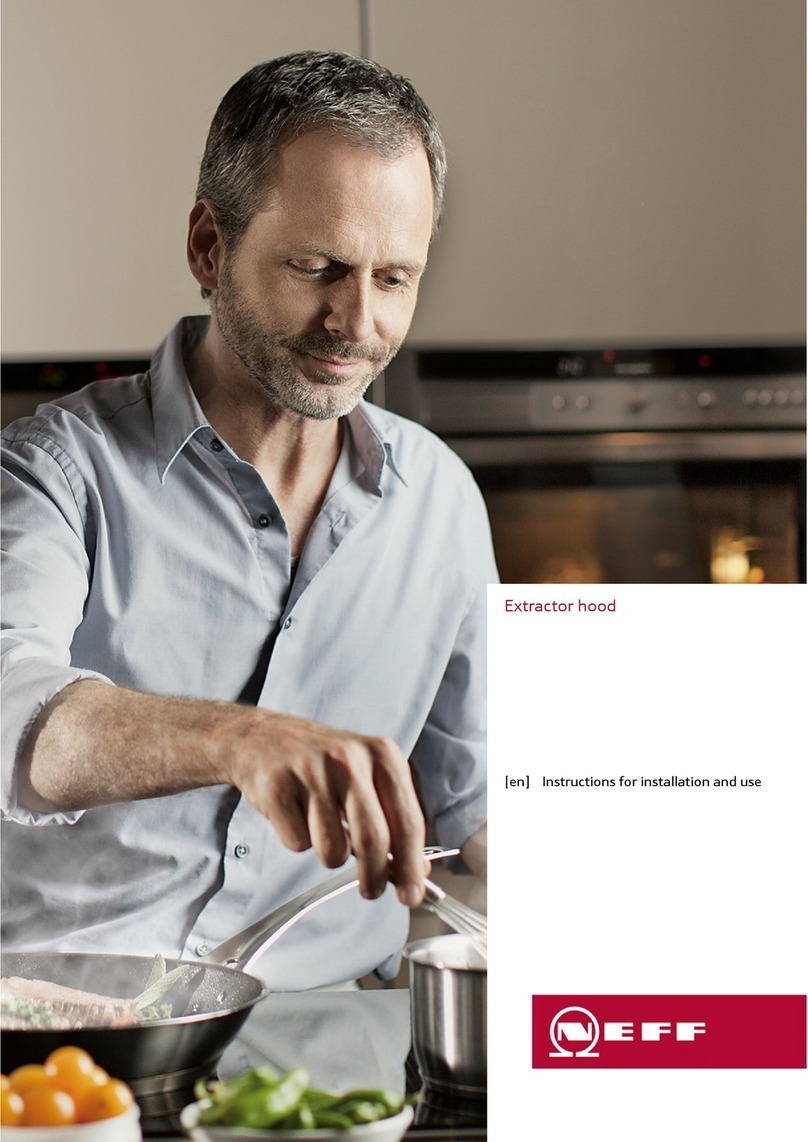
Safety en
3
WARNING‒Risk of poisoning!
Risk of poisoning from flue gases being
drawn back in. Room-air-dependent heat-pro-
ducing appliances (e.g. gas, oil, wood or coal-
operated heaters, continuous flow heaters or
water heaters) obtain combustion air from the
room in which they are installed and dis-
charge the exhaust gases into the open
through an exhaust gas system (e.g. a chim-
ney). With the extractor hood switched on, air
is extracted from the kitchen and the adjacent
rooms. Without an adequate supply of air, the
air pressure falls below atmospheric pressure.
Toxic gases from the flue or the extraction
shaft are sucked back into the living space.
▶Always ensure adequate fresh air in the
room if the appliance is being operated in
exhaust air mode at the same time as a
room-air-dependent heat-producing appli-
ance is being operated.
▶It is only possible to safely operate the ap-
pliance if the pressure in the room in which
the heating appliance is installed does not
drop more than 4Pa(0.04mbar) below at-
mospheric pressure. This can be achieved
whenever the air needed for combustion is
able to enter through openings that cannot
be sealed, for example in doors, windows,
incoming/exhaust air wall boxes or by
other technical means. An incoming/ex-
haust air wall box alone does not ensure
compliance with the limit.
▶In any case, consult your responsible chim-
ney sweep. They are able to assess the
house's entire ventilation setup and will
suggest the suitable ventilation measures
to you.
▶Unrestricted operation is possible if the ap-
pliance is operated exclusively in circulat-
ing-air mode.
WARNING‒Risk of fire!
Fatty deposits in the grease filters may catch
fire.
▶Never operate the appliance without a
grease filter.
▶Clean the grease filters regularly.
▶Never work with naked flames close to the
appliance (e.g. flambéing).
▶Do not install the appliance near a solid
fuel heating appliance (e.g. wood- or coal-
burning) unless the heating appliance has
a sealed, non-removable cover. There must
be no flying sparks.
Hot oil or grease ignites very quickly.
▶Always supervise hot oil and fat.
▶Never extinguish burning oil or fat with wa-
ter. Switch off the cooking zone. Extinguish
flames carefully using a lid, fire blanket or
something similar.
When gas burners are in operation without
any cookware placed on them, they can build
up a lot of heat. A ventilation appliance in-
stalled above the cooker may become dam-
aged or catch fire.
▶Only operate the gas burners with cook-
ware on them.
Operating multiple gas hobs at the same time
generates a great deal of heat. A ventilation
appliance installed above the cooker may be-
come damaged or catch fire.
▶Only operate the gas hobs with cookware
on them.
▶Select the highest fan setting.
▶Never operate two gas hobs simultan-
eously on the highest flame for longer than
15 minutes. Two gas hobs correspond to
one large burner.
▶Never operate large burners of more than
5kW with the highest flame for longer
than 15minutes, e.g. a wok.
WARNING‒Risk of burns!
The accessible parts of the appliance become
hot during operation.
▶Never touch these hot parts.
▶Keep children at a safe distance.
The appliance becomes hot during operation.
▶Allow the appliance to cool down before
cleaning.

